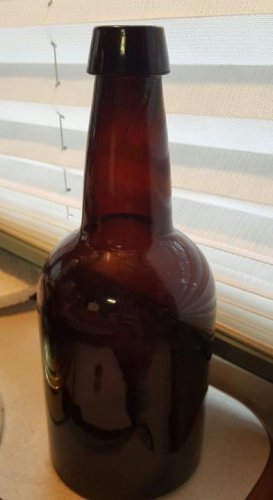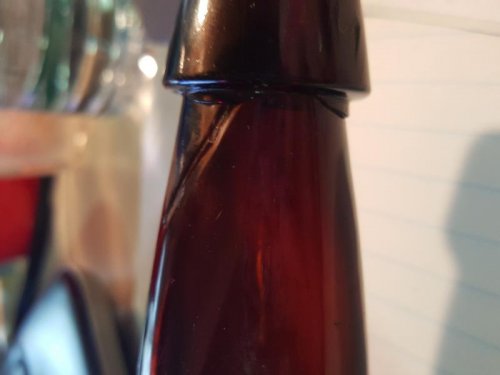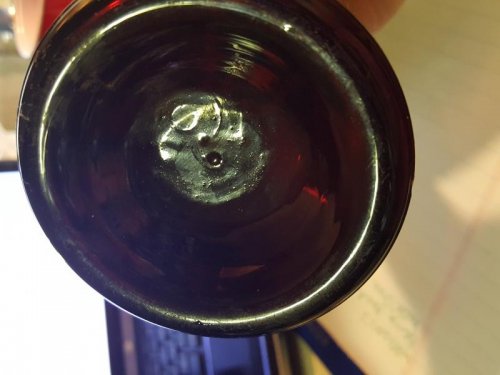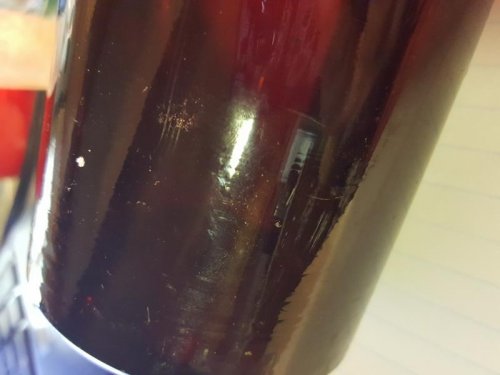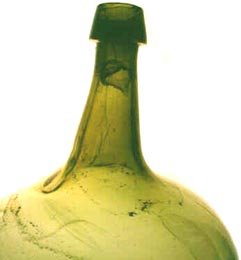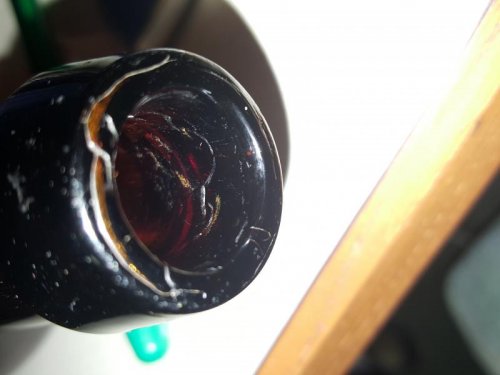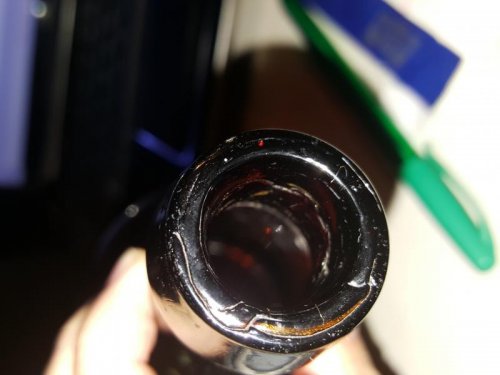tropichahni
Active Member
- Joined
- Jan 19, 2017
- Messages
- 36
- Reaction score
- 0
- Points
- 0
Here is another bottle I have which brings up a lot of questions. I see ring marks consistently through the bottle, so does that identify it as a turn molded bottle? I see no visible seams on neither the bottle nor be applied finish. Am I correct in identifying this as an applied finish? I see two places where the glass has seeped down past the application point. This bottle confuses me because of the applied finish and the shine. I'm looking for more information to help me continue to identify bottles. Any help in identifying and correcting me in this process is appreciated. I'm looking for the age usage and value of a bottle like this. Thank you

